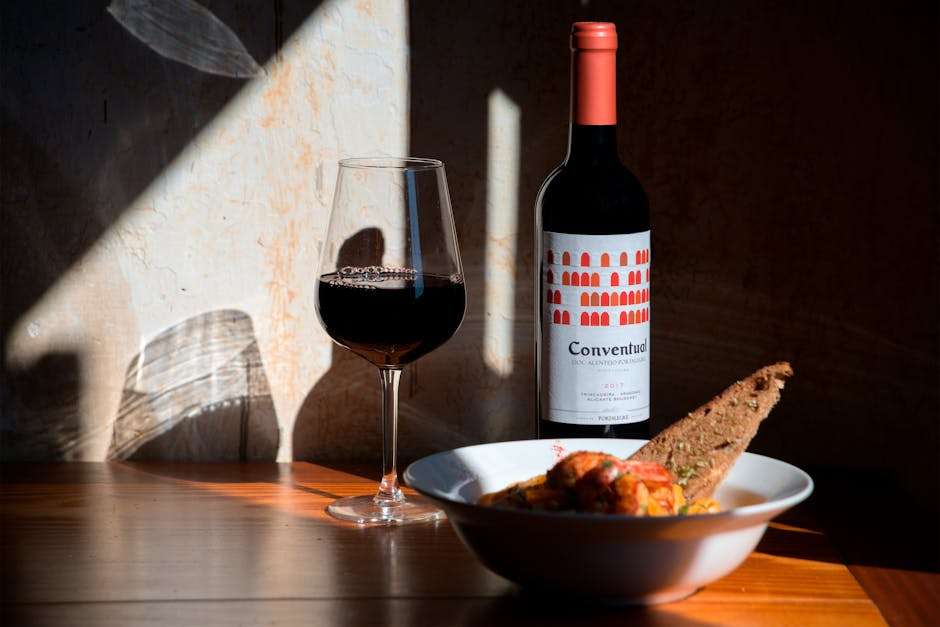A Beginner’s Guide to Pairing Wine with Food
Wine and food pairing can seem like a daunting task, especially for beginners. However, with a little guidance and practice, anyone can master the art of pairing wines with their favorite dishes. In this guide, we’ll explore the basics of wine and food pairing, offering you practical tips and tricks to ensure your next meal is a delightful experience. ???
Table of Contents
1. Introduction to Wine Pairing
2. The Basics of Wine Pairing
3. Pairing Red Wine with Food
4. Pairing White Wine with Food
5. Dessert Wines and Their Pairings
6. Common Mistakes to Avoid
7. Conclusion
8. FAQs
Introduction to Wine Pairing
Wine pairing is not just about matching a bottle to a dish; it’s about enhancing the flavors of both the food and the wine. Think of it as a dance, where each element complements the other, creating a harmonious experience. Whether you’re a wine enthusiast or a casual drinker, understanding the basics of wine pairing can elevate any dining occasion.
The Basics of Wine Pairing
The key to successful wine pairing lies in balance. Here are some foundational principles to help you get started:
1. Match the Intensity: Pair light wines with lighter dishes and robust wines with heartier meals. For example, a delicate Pinot Grigio works beautifully with a light salad, while a bold Cabernet Sauvignon pairs well with a rich steak.
2. Consider the Sauce: Often, the sauce dictates the pairing more than the main ingredient. A creamy pasta sauce pairs well with a buttery Chardonnay, while a tomato-based sauce matches nicely with a Chianti.
3. Complement or Contrast: You can either complement flavors or create contrast. A sweet wine like Riesling can balance the heat of spicy dishes, whereas a similar flavor profile can enhance the dish’s existing flavors.
Pairing Red Wine with Food ?
Red wines are known for their bold flavors and tannins, making them ideal for pairing with a variety of foods:
1. Cabernet Sauvignon: This full-bodied wine pairs wonderfully with red meats, such as beef or lamb, thanks to its tannic structure that cuts through the fat.
2. Merlot: With its smooth texture and fruity notes, Merlot complements roasted chicken or turkey, offering a delightful balance.
3. Pinot Noir: Known for its versatility, Pinot Noir pairs well with earthy flavors like mushrooms and truffles, as well as lighter meats like duck or pork.
Pairing White Wine with Food ?
White wines offer a refreshing counterpoint to many dishes. Here are some popular pairings:
1. Chardonnay: This versatile wine can range from light and crisp to rich and buttery, making it a great match for grilled chicken, seafood, and creamy pasta dishes.
2. Sauvignon Blanc: Known for its high acidity and citrus notes, Sauvignon Blanc pairs beautifully with goat cheese, asparagus, and salads.
3. Riesling: Riesling’s sweetness and acidity make it an excellent choice for spicy foods, such as Thai or Indian cuisine.
Dessert Wines and Their Pairings ?
Dessert wines are the perfect way to end a meal on a sweet note:
1. Port: This rich, sweet wine pairs well with chocolate desserts or blue cheese.
2. Sauternes: With its honeyed notes, Sauternes complements fruit-based desserts or foie gras.
3. Moscato: Light and sweet, Moscato is a delightful match for fruit tarts or light pastries.
Common Mistakes to Avoid ?
While pairing wine with food can enhance your dining experience, there are some common pitfalls to be aware of:
1. Overpowering Flavors: Avoid pairing a wine that is too strong for your dish, as it can overwhelm the flavors.
2. Ignoring Personal Preferences: Always consider personal taste. If you don’t like a particular wine, it won’t matter if it’s the perfect pairing.
3. Serving Wine at the Wrong Temperature: Ensure your wine is served at the correct temperature to fully appreciate its flavors.
Conclusion
Pairing wine with food is an art that can transform your dining experiences. By understanding the basic principles and experimenting with different pairings, you’ll discover combinations that delight your palate. Remember, the best pairing is the one that you enjoy the most, so don’t be afraid to trust your taste buds. Cheers to your wine journey! ?
FAQs
1. Can I drink red wine with fish? While it’s traditionally not recommended, some lighter reds like Pinot Noir can pair well with richer fish dishes.
2. What wine goes with spicy food? Wines with a bit of sweetness, like Riesling or a chilled Rosé, can complement spicy dishes beautifully.
3. Is it okay to mix different wines in one meal? Absolutely! Mixing wines can enhance different courses, just be mindful of the progression from lighter to heavier wines.
4. How do I choose a wine if I’m unsure of the menu? Opt for versatile wines like Chardonnay or Pinot Noir, which generally pair well with a variety of dishes.
5. What’s a good wine for a beginner? A light and fruity wine, such as a Riesling or Pinot Grigio, is typically a great starting point for beginners.
